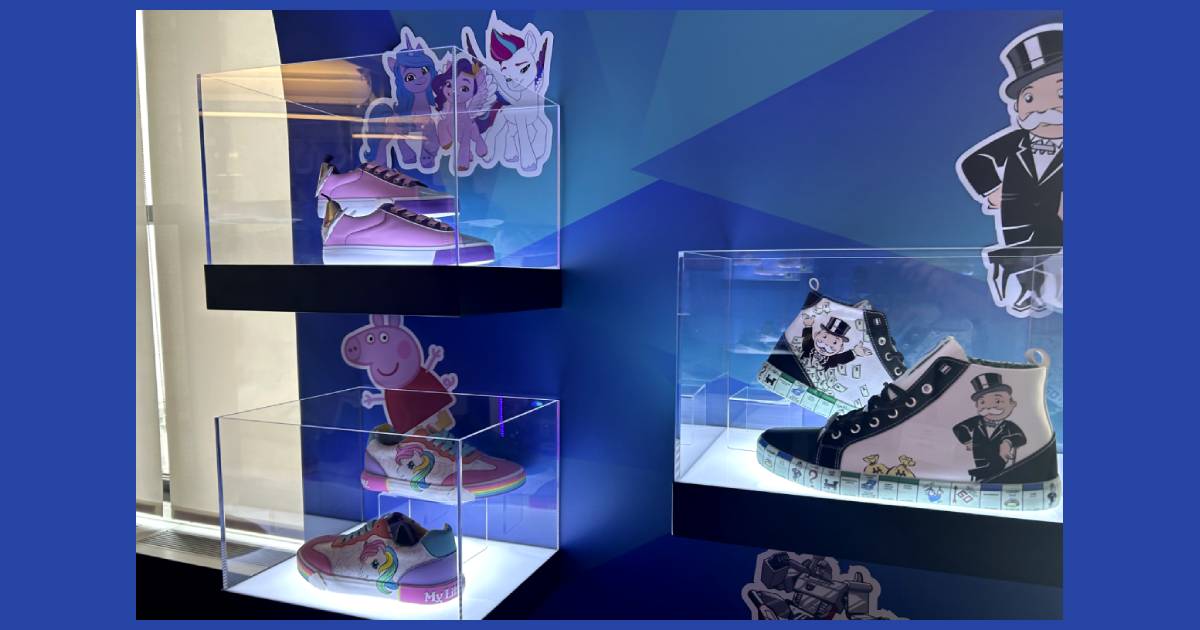
Footwear Makes Strides with Retro Designs
By Mark Seavy
Everything old was new again at the recent Footwear Show New York Expo (FSNYE) where brands that peaked in popularity in the 1970s and 1980s were being revived in styles designed for a new generation of consumers.
Pajar, for example, is readying new slides, sneakers, and on-court shoes for pickleball and badminton under Authentic Brand Group’s (ABG) Prince brand. Prince, which traces its lineage to the 1970s, launched as the first supplier of oversized tennis racquets before expanding into footwear and was among the first suppliers of leather tennis shoes. ABG acquired the label in 2012.
Sperry Top-Sider brand, which was among the first boat shoes when it launched in 1935 and experienced a renaissance in the 1970s, is also making a comeback. ABG acquired Sperry from Wolverine World Wide in January and has since licensed Aldo (adult shoes) and The SG Companies (youth shoes). SG plans to ship its Sperry-branded products in spring 2025, said Kristy Yvars, VP Licensing and Marketing.
“The nostalgia play can be cyclical and right now there is a yearning for going back,” said Greg Nicoghosian, VP of Global Sales at Pajar, which is launching its 80-SKU Prince assortment starting in Q4. And though younger consumers can’t as easily relate to a nostalgic look back at a decades-old brand, the story behind those IPs is what Millennial and Gen Z buyers are excited by, he said.
Birkenstock, for example, refreshed its signature style from its professional collection for the first time since the original designed debuted in 1995. The Birki Air 2.0 updated the vented clog style from the mid-1990s with a new design featuring orthopedic features for healthcare, hospitality, and other industries.
Adidas, meanwhile, has refashioned its Samba brand (which helped launch the company in 1949) through partnerships with lifestyle brand Kith, singer Pharrell Williams’ Humanrace, English fashion designer Grace Wales Bonner, and designer Emily Oberg’s Sporty & Rich label.
Moccasin maker Minnetonka is relaunching its 71-year-old Thunderbird brand featuring the beadwork of Red Lake Nation Anishinaabeg designer Lucie Skjefte. Minnetonka began reconciliation efforts with Native American communities in 2020 after acknowledging its appropriation of their designs.
And as many footwear suppliers focus on reviving and reimagining classic brands, it was clear at the FSNYE show they were also re-examining their strategies by narrowing their licensed portfolios.
SG Companies, for example, has narrowed its assortment of licensed brands during the past few years to 15 (down from 35), Yvars said. Many of the cutbacks came in entertainment brands, although SG is continuing with family and seasonal brands like Microsoft’s Minecraft, Peanuts, Grinch, Just Born’s Peeps and Hershey’s brands.
“We are really moving into classic heritage brands, which is the reason why Sperry made sense because it is tried and true,” Yvars said. “At the same time, we walked away from some of the entertainment brands. We needed to focus on what were the key initiatives for us as a company. When you have 35 licenses, you are not going to be able to give it your all.”
And because Ground Up has reduced the number of collections it launches each quarter, it now has the bandwidth to expand with new items inspired by food brands in spring 2025 under a licensing agreement with PepsiCo for Mountain Dew, Cheetos, and other labels, said CEO Jack Gindi.
“There always is the risk of having too many brands, but you have to be very smart,” Gindi said. “You do not land grab. If we sign a property, we are going to place it (at retail). We don’t cast a wide net, scoop, and then try and figure out what we are going to do. We apply strategy behind it, and we like to be patient.”

















